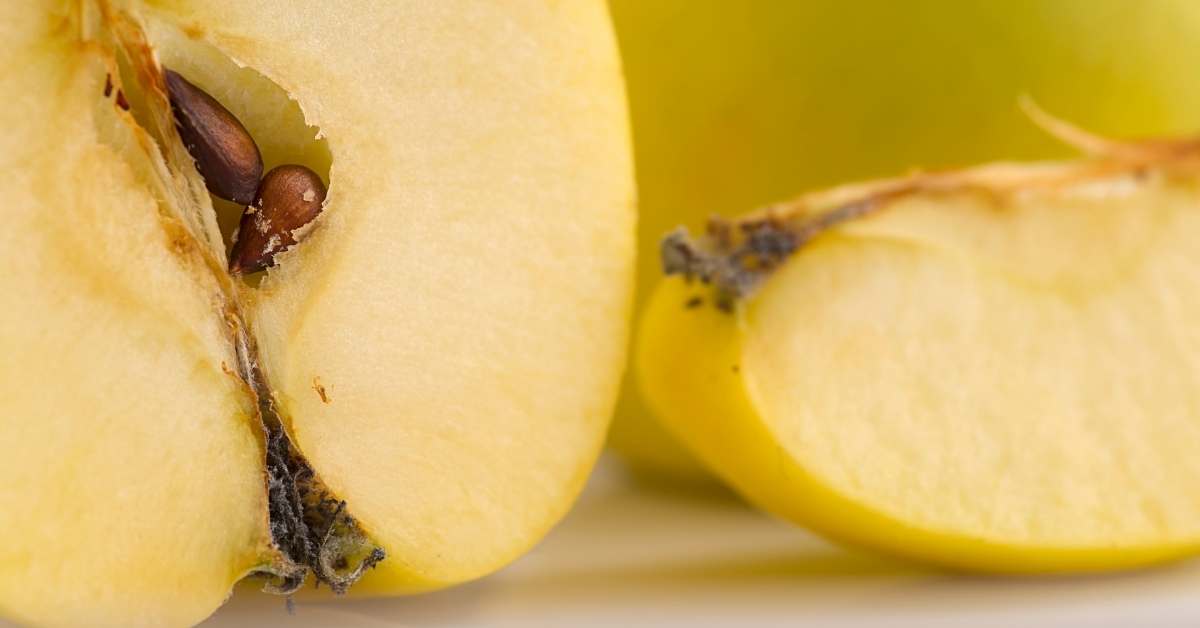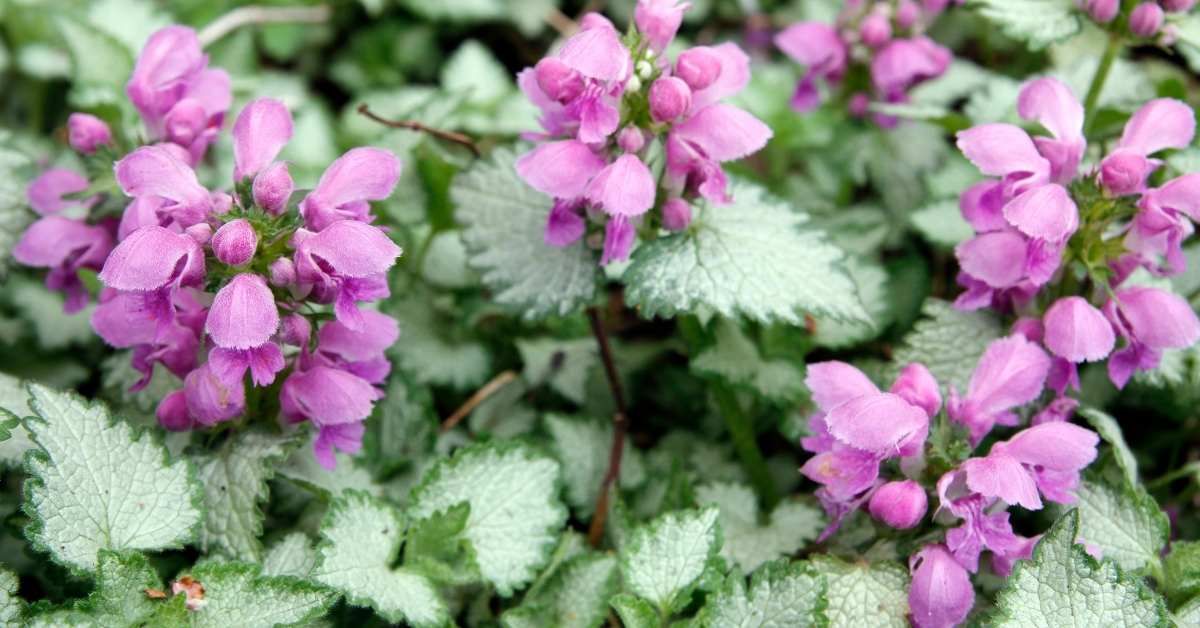If you are looking for a low-maintenance, drought-tolerant, and beautiful plant for your hot and sunny garden, you might want to consider Russian sage. This perennial herb has silvery foliage and purplish-blue flowers that create a stunning contrast with other plants. In this article, you will learn how to grow Russian sage successfully, what varieties to choose from, and how to combine it with other flowers for a striking effect.
Today we are talking about growing Russian Sage successfully at home, in your backyard. Russian Sage is one of those interesting plants that have been oversold in the nursery business but have a valuable place in the garden.
How to grow Russian Sage?
My own experience with this plant is that it performs best in a very well-drained garden (red hot and sunny-dry), and if you give it good garden soil with lots of water, you can expect to have it die over the winter.
Clay soils will simply kill Perovskia, and there is little point in trying to grow it there. So, think of the hottest and poorest soil you have and plant this gem there.
Perovskia is the botanic name, and it was named after the Turkestani general/statesman V.A. Perovski (1794-857). The common name Russian sage is evident because of the fragrance of the leaves and the plant’s origin in Asia.
What is Russian Sage?
Russian sage is a flowering herbaceous perennial plant and subshrub that belongs to the mint family. It has silvery foliage and purplish-blue flowers that bloom from mid-summer to late fall. It is native to Asia and extremely tolerant of dry conditions. It is often used in xeriscaping and cottage gardens, where it adds visual appeal and fragrance. It can be propagated by seeds or cuttings and requires well-drained soil and full sun. It may need support or pruning to prevent flopping. It can be combined with other plants that contrast with its color and height, such as black-eyed Susans or goldenrod.
Read also this: Lavatera Flowers: How To Grow From Seed
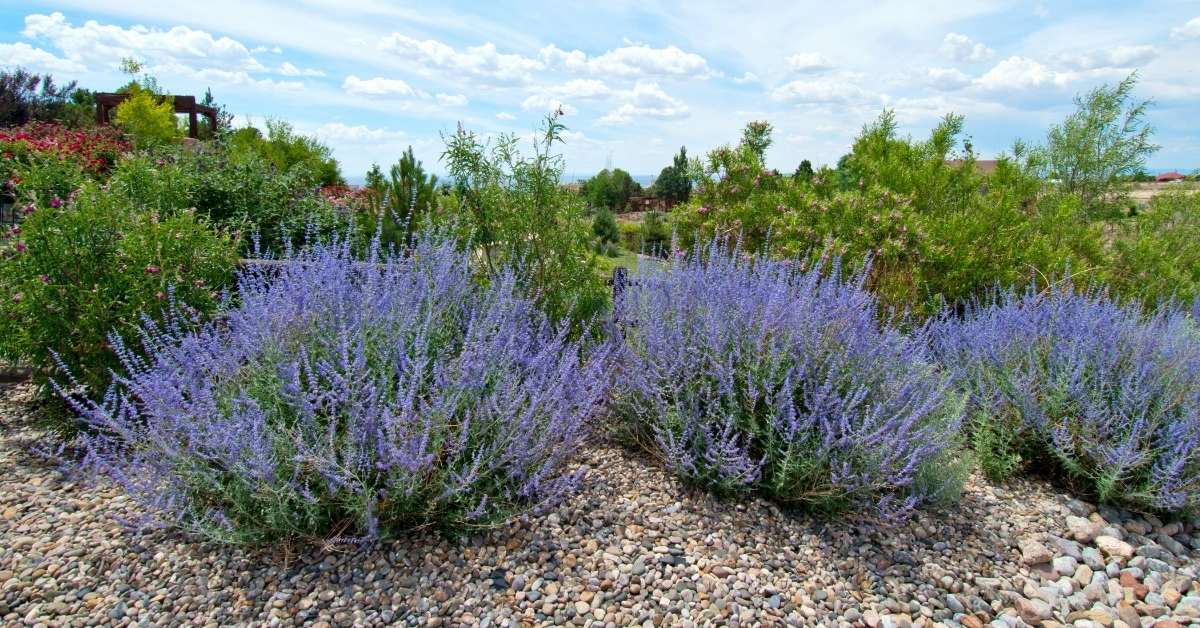
Where to Plant Russian Sage?
At 24 to 36 inches tall, Russian sage is a perfect plant for the full hot sun garden. Its silver foliage stands out well against other greens in the garden, and the haze of purplish-blue flowers in mid to late summer is quite attractive.
Plant these 18 inches apart (you’ll want 3 or more in a clump) in well-drained, sandy soil.
For those of you with propagation in mind, Perovskia propagates easily from cuttings or seeds (although it was not a spreading plant in my garden).
Russian sage is a versatile plant that can thrive in various conditions and locations. However, to enjoy its best performance and appearance, you need to choose a site that meets its basic requirements. Russian sage needs full sun to produce abundant flowers and sturdy stems.
It also needs well-drained soil that is not too fertile or moist. Sandy or gravelly soils are ideal, as they prevent root rot and fungal diseases. You can plant Russian sage in hot and dry areas, such as along driveways, sidewalks, or fences, where it can tolerate the heat and drought. You can also plant it in mixed borders, cottage gardens, or xeriscapes, where it can add color and texture to the landscape. Space the plants 2 to 3 feet apart to allow for air circulation and growth.
How to Propagate Russian Sage?
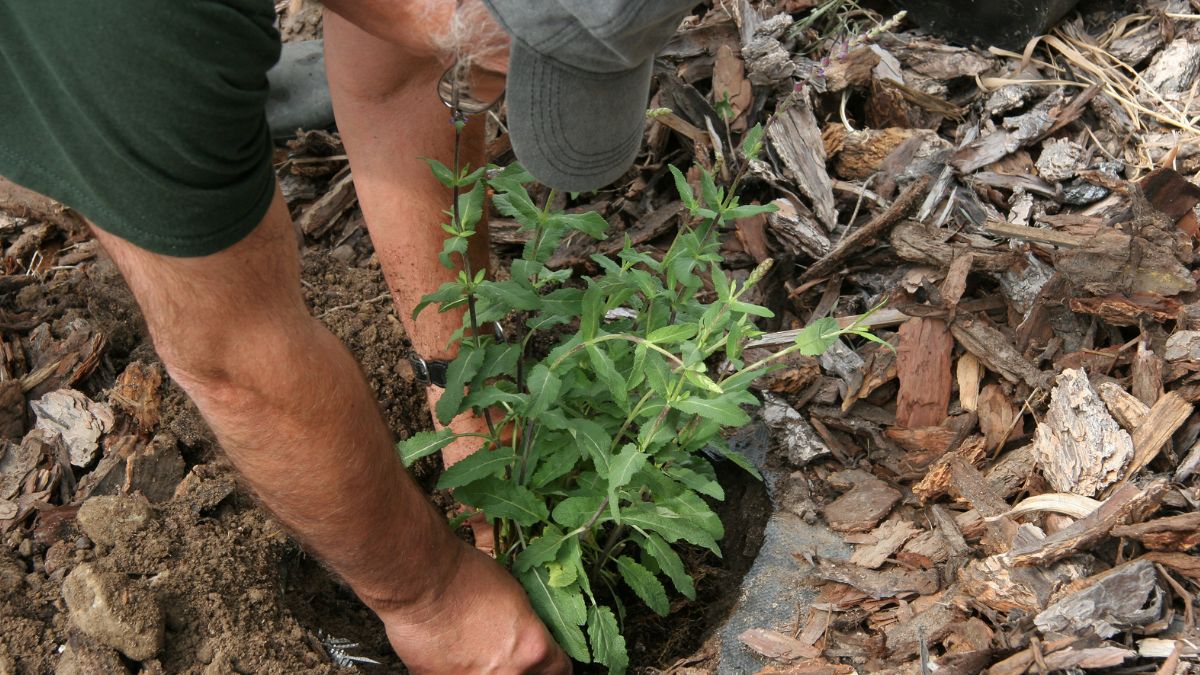
If you want to have more Russian sage plants in your garden, you have several options to propagate them.
One of the easiest methods is to grow them from seeds. You can collect the seeds from your existing plants in late summer or fall after the flowers fade and the seed pods form. Dry the seeds for a couple of weeks and then remove them from their pods. You can sow the seeds indoors in early spring, about ¼ inch deep in light and well-draining soil. Keep the soil moist but not soggy, and provide a sunny location. The seeds should germinate in two to four weeks. You can transplant the seedlings outdoors after the last frost, spacing them 2 to 3 feet apart.
Another method is to propagate Russian sage from stem cuttings. You can take cuttings from healthy stems in early spring before new growth begins. Choose stems that are at least six inches long and have two or three leaves. Remove the leaves from the lower half of the stem and cut off any flowers or buds. You can also strip away some of the bark from the bottom of the stem to expose more cambium tissue.
Dip or soak the end of the stem in rooting hormone powder, which will help stimulate root formation. Insert the cutting into moist potting soil or a rooting medium such as vermiculite, perlite or sand.
Make sure that at least one inch of the stem is buried in the medium. Water well and place the cutting in a bright location but not in direct sunlight. You can also cover the cutting with a plastic bag or a dome to create a humid environment. Roots should form within two to four weeks. When the roots are a few inches long, you can transplant your new Russian sage plants into larger pots or the garden.
A third method is to propagate Russian sage by division. This is a good way to rejuvenate old or overcrowded plants, as well as to create new ones. You can divide Russian sage in spring or autumn when the plant is dormant. Dig up the plant carefully and shake off any excess soil.
Use a sharp knife or spade to cut through the root ball and separate it into smaller sections. Each section should have some roots and stems attached. Discard any dead or diseased parts of the plant. Replant the divisions in well-drained soil and water thoroughly. Space them 2 to 3 feet apart and mulch around them to conserve moisture and prevent weeds.
Whichever method you choose, you can enjoy having more Russian sage plants in your garden that will reward you with their fragrant foliage and lovely flowers.
How to Care for Russian Sage?
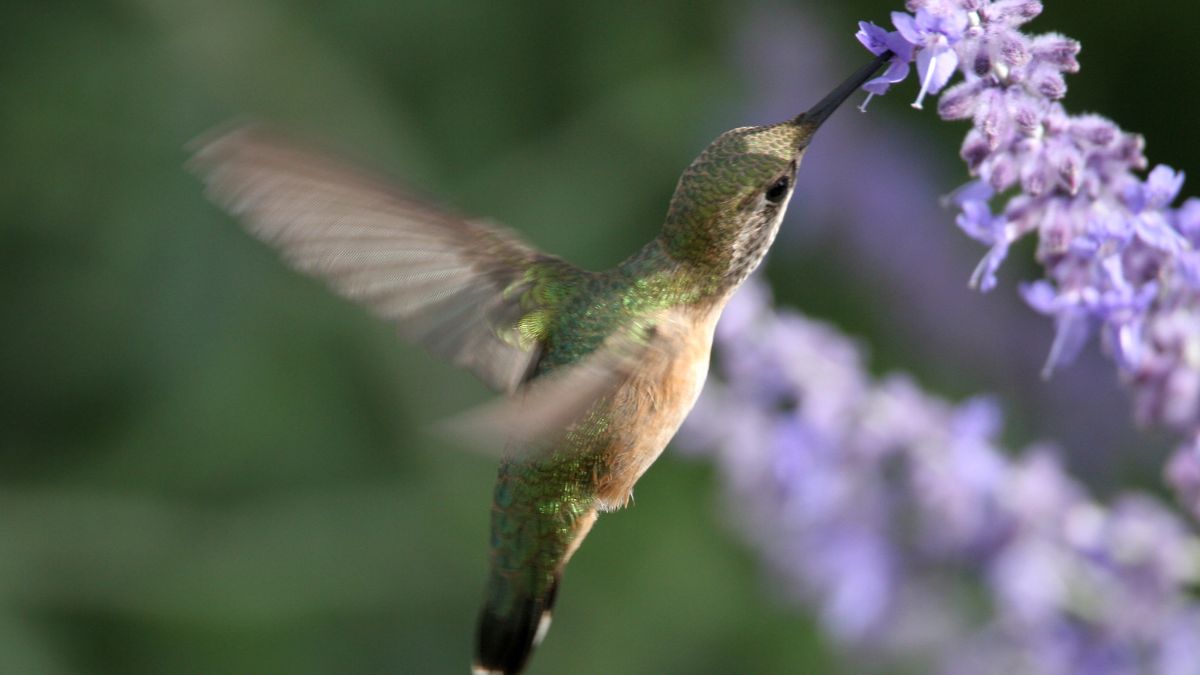
Russian sage is a low-maintenance plant that does not require much care once established. However, there are some things you can do to keep it healthy and attractive throughout the year. Here are some tips on how to care for Russian sage:
Watering:
Water regularly during the first growing season to establish a deep root system. After plants become established, they tolerate drought without complaint and rarely need supplemental watering. However, if the soil is very dry, you can water occasionally to prevent wilting or stress.
Pruning:
Cut the woody plant stems down to about 6 inches in early spring to make way for new growth. This will encourage bushy and compact plants that produce more flowers and resist flopping. You can also remove any dead or damaged stems throughout the year. If you want to control the size or shape of your plants, you can prune them lightly after flowering.
Fertilizer:
Don’t bother. Russian sage does not need any fertilizer and may become leggy and weak if overfed. It thrives in poor and well-drained soils. However, you can add some compost or organic matter around the plants every other year in late fall to improve the soil structure and drainage.
Staking:
Depending on the variety and growing conditions, Russian sage may need some support to prevent it from falling over or sprawling. You can use stakes, hoops, cages, or peony rings to hold the stems upright. Alternatively, you can plant Russian sage with other sturdy plants that can help support it, such as black-eyed Susans or goldenrod.
Dividing:
Russian sage can spread by runners and may become overcrowded or invasive over time. You can divide the plants every four to six years in spring or autumn to rejuvenate them and create new plants. Dig up the plants carefully and cut through the root ball with a sharp knife or spade. Discard any old or diseased parts and replant the divisions in well-drained soil.
Winter care:
Russian sage is hardy in USDA zones 5 to 9 and can survive cold winters with little protection. However, in colder regions, you may want to mulch around the plants with straw or leaves to insulate the roots from frost. Do not cut back the stems until spring, as they provide some winter interest and shelter for wildlife.
Diseases and pests:
Russian sage is generally pest and disease-free and resistant to deer and rabbits. However, it may suffer from root rot or fungal infections if grown in wet or poorly drained soils. To prevent this, avoid overwatering and improve soil drainage. You can also spray the plants with a fungicide if you notice any signs of disease. Occasionally, aphids or spider mites may infest the plants, but they are usually not a serious problem. You can wash them off with a strong jet of water or use an insecticidal soap if needed.
Recommended varieties and description
Perovskia atriplicifolia The species is the one most often found in garden centers and, at 36 inches tall, is a wonderful addition to the late summer and fall garden.
‘Filigran’ is a new introduction from Germany that has more delicate cut foliage than the species, and the plants are bushy and upright.
Here is a possible long-form and informative paragraph based on web search results:
Russian Sage Varieties and Description
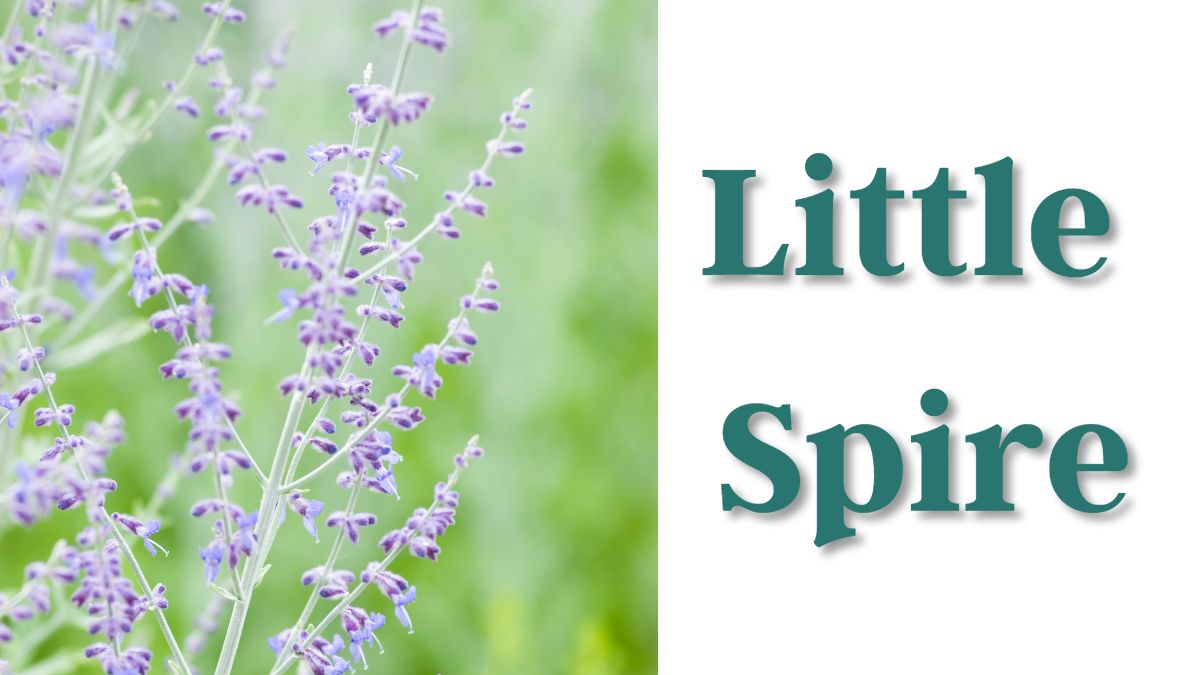
Russian sage (Perovskia atriplicifolia, syn. Salvia yangii) is the most common and widely available species of Russian sage. It is a semi-woody perennial or subshrub that grows to 3-5 feet tall and wide, with silvery-green foliage and lavender-blue flowers that bloom from mid-summer to fall. It is native to central Asia and has a pungent sage-like scent when bruised. It is drought-tolerant, deer-resistant, and attractive to pollinators.
There are also several cultivars of Russian sage that offer different features and benefits. Here are some of the popular ones:
- ‘Little Spire’ is a compact variety that reaches 2 feet tall and wide, with upright stems that resist flopping. It has dark blue flowers and gray-green leaves.
- ‘Filigran’ is a German introduction that has more finely cut foliage than the species and more bushy and upright plants. It grows to 3-4 feet tall and wide, with light blue flowers.
- ‘Blue Jean Baby’ is a 2016 introduction that blooms earlier than most varieties, starting in late spring or early summer. It has deep blue flowers and grows to 2-3 feet tall and wide.
- ‘Denim ‘n Lace’ is a 2015 introduction that has sky-blue flowers that retain their color well into fall. It has strong upright stems that prevent flopping and grows to 2-3 feet tall and wide.
- ‘Sage Advice’ is one of the darkest varieties, with rich lavender-purple flowers. It grows to 3-4 feet tall and wide, with gray-green foliage.
- ‘Peek-A-Blue’ is a compact variety that grows to 18 inches tall and wide, with silvery-green stems and leaves and lacy lavender-blue flowers.
- ‘Rocketman’ is a 2014 introduction that has large lavender-blue flowers on sturdy stems. It grows to 3-4 feet tall and wide, with gray-green foliage.
As a last note, try planting Perovskia with black-eyed Susans for a stunning combination of yellow and blue. The daisies will also help hold the tends-to-be-floppy Russian sage upright. Early-blooming goldenrod varieties would also be a good combination.
How to Combine Russian Sage with Other Flowers?
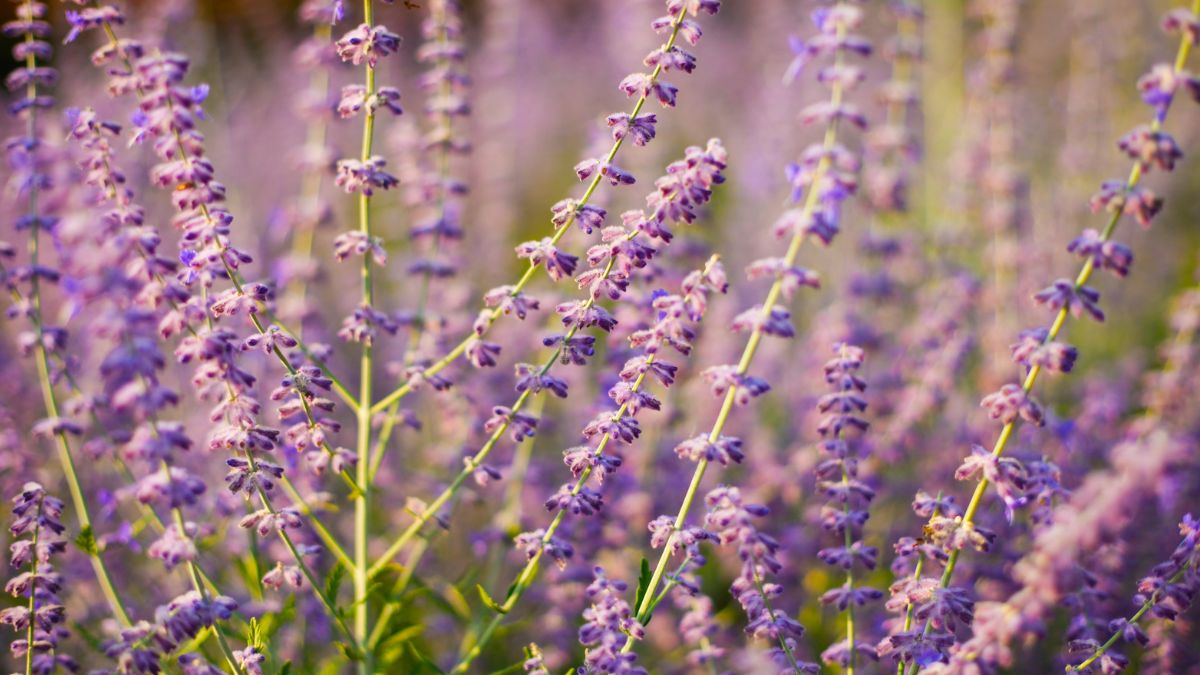
Russian sage is a stunning plant that can add color, fragrance, and texture to your garden. Its lavender-blue flowers and silvery-green foliage contrast well with many other plants, creating eye-catching combinations. However, not all plants are suitable companions for Russian sage, as it has some specific requirements and preferences. Here are some tips on how to combine Russian sage with other flowers:
- Choose plants that have similar growing conditions as Russian sage. This means full sun, well-drained soil, and drought tolerance. Avoid plants that need moist or rich soil, as they may compete with Russian sage for water and nutrients.
- Choose plants that have different heights, shapes, and bloom times than Russian sage. This will create visual interest and diversity in your garden. For example, you can pair Russian sage with low-growing ground covers, tall grasses, or late-blooming perennials.
- Choose plants that have complementary or contrasting colors to Russian sage. You can create harmonious combinations by using plants that have shades of blue, purple, or pink. You can also create striking contrasts by using plants that have yellow, orange, or red flowers.
- Choose plants that have different textures and scents than Russian sage. You can add variety and appeal to your garden by using plants that have smooth or glossy leaves, fuzzy or spiky flowers, or sweet or spicy aromas.

Some examples of plants that pair well with Russian sage are:
- Daylilies: These perennials have trumpet-shaped flowers that come in a range of colors, from yellow to red. They bloom from summer to fall and need full sun and well-drained soil. They contrast nicely with the purple flowers and gray-green leaves of Russian sage.
- Black-eyed Susans: These perennials have cheerful yellow daisy-like flowers with brown centers. They bloom from summer to fall and need full sun and well-drained soil. They complement the color and height of Russian sage and attract pollinators.
- Yarrow: These perennials have feathery foliage and flat clusters of small flowers that come in white, pink, red, or yellow. They bloom from summer to fall and need full sun and well-drained soil. They are drought-tolerant and beneficial for other plants. They contrast well with the shape and color of Russian sage.
- Sweet William: These biennials have fragrant clusters of small flowers that come in bicolor, white, pink, red, or purple. They bloom from spring to summer and need full sun and well-drained soil. They add color and scent to the garden and contrast with the foliage of Russian sage.
- Coreopsis: These perennials have bright yellow daisy-type flowers that bloom from summer to fall. They need full sun and well-drained soil and are drought-tolerant. They attract butterflies and bees and complement the color and texture of Russian sage.
Conclusion
Russian sage is a beautiful and versatile plant that can enhance any garden with its lavender-blue flowers and silvery-green foliage. It is easy to grow and care for, as it needs little water, fertilizer, or pruning. It is also resistant to pests, diseases, and deer. However, to get the most out of this plant, you need to choose the right companion plants that have similar growing conditions and offer different colors, heights, shapes, and textures.
In this article, we have suggested some of the best plants combine with Russian sage, such as daylilies, black-eyed Susans, yarrow, sweet William, and coreopsis. By following our tips and examples, you can create stunning combinations that will make your garden a delight for the eyes and the senses.
We hope you enjoyed this article and learned something new about Russian sage and its companion plants. If you did, please share it with your friends and family who might be interested in gardening. And don’t forget to leave us a comment below and let us know what you think. We would love to hear from you!
FAQ
Is Russian sage edible?
Yes, Russian sage is edible in small amounts. The flowers and leaves can be used as ornamental plants or as culinary herbs. They have a subtle, earthy flavor that is similar to rosemary or thyme. However, large consumption of Russian sage can be toxic to both humans and pets, as it contains thujone, a compound that may damage the liver. Therefore, it is best to use Russian sage sparingly in recipes or consult with a healthcare professional before consuming this herb if you have any health concerns.
How do I use Russian sage in cooking?
To use Russian sage in cooking, you need to wash and dry the leaves and flowers thoroughly before using them. Then, you can finely chop or crush the leaves and add them to your dish. You can also use the whole flowers as a garnish or decoration for salads and desserts. Russian sage can be used fresh or dried, but the dried leaves have a more intense flavor and aroma. You can pair Russian sage with roast meats, stews, soups, and vegetables, adding a lovely aromatic flavor to many dishes.
How to prune Russian sage?
You can prune Russian sage in early spring to encourage new growth and flowering. Cut back the woody stems to about 6 inches from the ground, leaving a few pairs of buds. You can also remove any dead or damaged stems throughout the year. If you want to control the size or shape of your plants, you can prune them lightly after flowering.
How do I make Russian sage tea?
To make Russian sage tea, you need to steep 1-2 teaspoons of dried leaves or a few fresh leaves in hot water for about 5-10 minutes. This tea has a light, refreshing flavor and can be enjoyed hot or cold. You can also add honey or lemon to enhance the taste. Russian sage tea is known for its anti-inflammatory, antiseptic, and antioxidant effects, making it a popular herb in alternative medicine. Some people use Russian sage tea to help alleviate symptoms of digestive issues, anxiety, and stress.
Does Russian sage spread
Yes, Russian sage can spread by seeds or runners, especially in ideal growing conditions. This can make it invasive in some areas, so you may need to remove unwanted seedlings or roots to keep it in check. However, newer cultivars have restrained runners and are less prone to spreading.
How to propagate Russian sage
You can propagate Russian sage by seeds, cuttings, or division. Seeds can be sown in spring or fall, but they may not produce plants true to the parent. Cuttings can be taken in late spring or early summer from new growth and rooted in moist soil or water. Division can be done in spring or fall by digging up the plants and separating them into smaller clumps.
Is Russian sage deer resistant
Yes, Russian sage is deer resistant, as well as rabbit resistant. The plant has a pungent sage-like scent that deters browsing animals. However, no plant is completely deer-proof, so you may still need to protect your plants with fencing or repellents if deer pressure is high.
When does Russian sage bloom
Russian sage blooms from mid-summer to fall, producing panicles of small lavender-blue flowers. The blooming period can last for several weeks, depending on the variety and the weather. Some newer cultivars bloom earlier than the species, starting in late spring or early summer.
When to transplant Russian sage
The best time to transplant Russian sage is in early spring or fall, when the plant is dormant or semi-dormant. Avoid transplanting in summer, when the plant is actively growing and flowering. To transplant Russian sage, dig up the plant carefully, keeping as much of the root ball intact as possible. Replant it in a sunny location with well-drained soil and water it well. Prune back any damaged or broken stems after transplanting.

